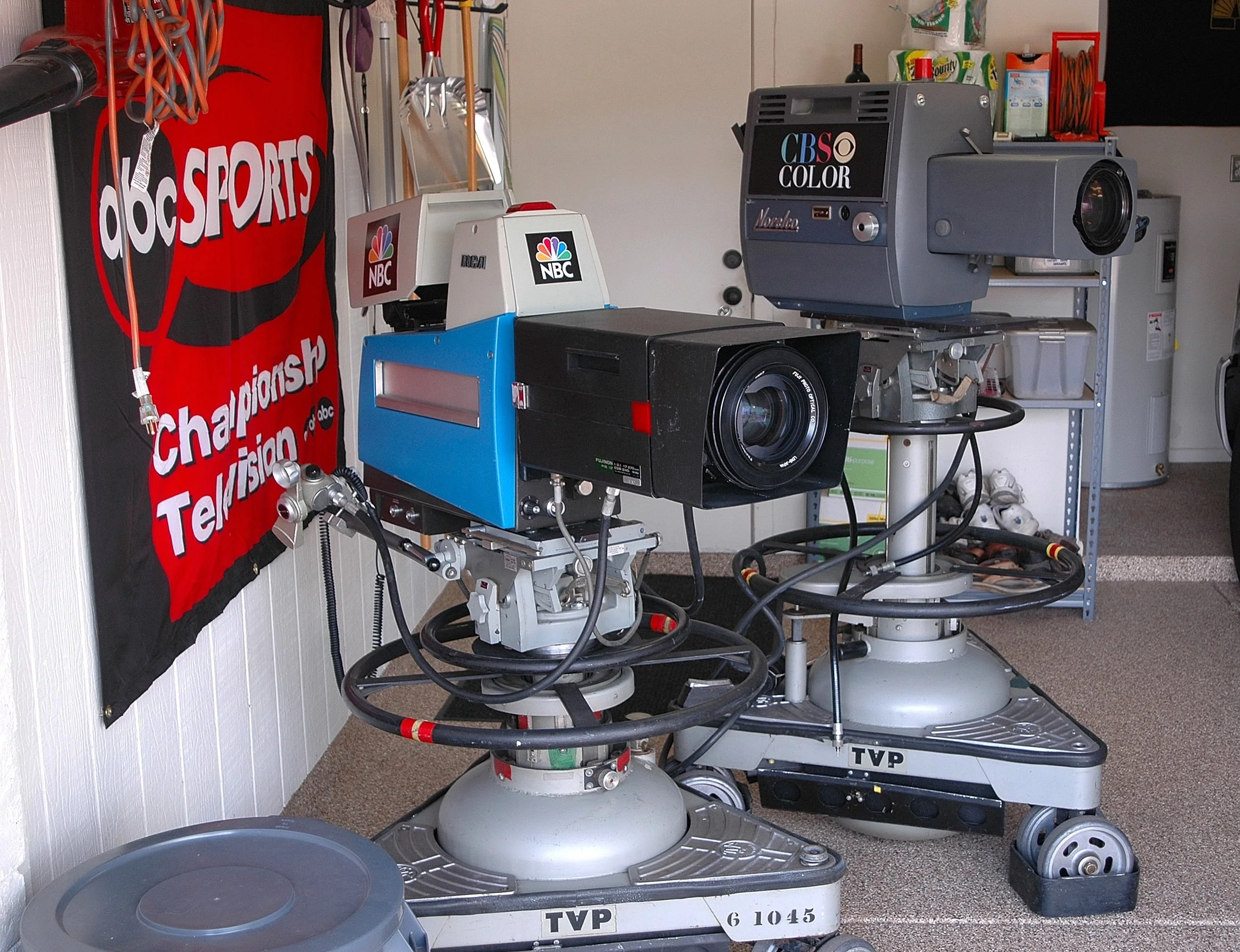Big Cameras
As a kid, I was fascinated by the technology of television production. Back in the 60s and 70s when I was growing up, you rarely got a glimpse of television cameras or other production equipment. Occasionally, directors would “break the fourth wall” allowing those of us at home a glimpse behind-the-scenes. Here’s Gene Rayburn getting testy with a cue card person on a Match Game program from 1976:
Match Game was produced at CBS Television City in Hollywood. The cameras you see in this clip were Norelco PC-70s. These cameras were manufactured by the Philips Company in Holland. When Philips wanted to sell their television cameras in the US, they were blocked from using the Philips name because its name was too similar to Philco, a US manufacturer of electronics. So, Philips used their Norelco brand (yes, same as the electric shavers) on cameras exported to the US. Ironically, some years later, Philips bought Philco. I was a pretty decent artist as a kid and remember spending hours with pad and pencil drawing television cameras from this era. These Norelcos were some of the first cameras I drew. I wish I had kept some of those drawings.
CBS used Norelco cameras in the 1960s and 70s because the other big television equipment manufacturer at the time was RCA. RCA owned rival NBC and there was no way CBS was going to put money into RCA’s coffers, so CBS bought a lot of Norelco cameras.
Over at NBC, you would occasionally get a glimpse of the cameras used by that network around the same time; the RCA TK-44. Here’s a shot of a TK-44 on The Tonight Show Starring Johnny Carson from the early 1980s:
My childhood fascination with television and radio broadcast production eventually led to jobs as a TV production assistant, TV cameraman, commercial producer and radio disc jockey. The first TV camera I ever used professionally was a TK-44.
Over the years, TV cameras got smaller and lighter. Today’s iPhone camera makes a much better picture than any of these early tube cameras, but I never lost my fasciation with them. So much so that around 2005, I got the crazy notion in my head of trying to see if I could find one of these old cameras to display in my office in my home in Arizona. I wondered, after all of these years, did any still exist?
After months of online archeology, I unearthed some old RCA TK-44 studio cameras that had been put away in storage and I negotiated to buy one. The shipping cost more than the camera. The one I bought came to me pretty beat up so I asked my Dad, who was retired and into restoring vintage cars as a hobby, if he would have a go at a cosmetic restoration of my TK-44. He agreed and did a fine job.
Restored RCA TK-44 studio camera in my home office
While doing all of the old TV camera archeology, as sometimes happens, one thing led to another. I ended up hearing about some more old TV cameras that were sitting in storage in Burbank, California. These cameras had seen duty at CBS and NBC and were close to being sent to the dump. The price was cheap enough, but these cameras and related equipment were far too heavy to ship. If I wanted them, I would need to move them myself.
The crazy continues as I find myself on a plane to Burbank, a cab ride to the Penske truck rental place and then to a storage unit near the Burbank airport. I ended up leaving that day with a Norelco PC-70, a RCA TK-47, two pneumatic pedestals, Vinten tri-pod heads, cables and some other odds and ends. As I drove all of this stuff across the desert in a rental truck to Phoenix, I thought…”what AM I doing?”
Norelco PC-70 from CBS (background) and RCA TK-47 from NBC (foreground)
Back home, I mounted the camera on their pedestals. The RCA TK-47 you see in this photograph was the successor to the TK-44 and was RCA’s last studio camera. These cameras are very heavy. It takes two people to lift them onto these pedestals. The camera bodies snap into heads that allow the camera operator to pan and tilt. Proper adjustment of the head makes the camera perfectly balanced so it can be panned and tilted with little effort. The camera body and pan and tilt heads sit on TVP P-50 pneumatic pedestal. With their tanks filled with air, the pedestals allow the camera to easily move up and down vertically. When everything is stet up right, operating one of these cameras is really quite fun.
For years I had these two cameras in the extra stall in my garage. My neighbors thought I was nuts. In retrospect, they were right, but it was fun. When I moved to California in 2010, my vintage cameras went to a broadcast museum.


